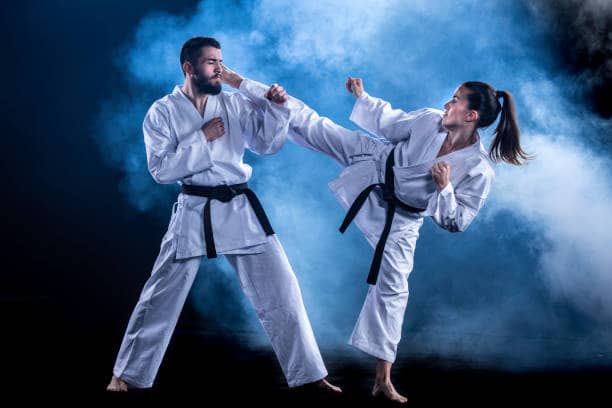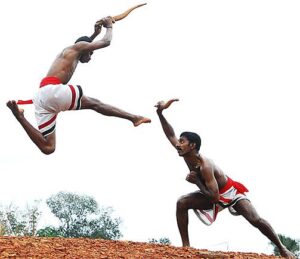What is the Line of Attack in Martial Arts?
Introduction
The Line of Attack in Martial Arts is a concept that is used to describe the way in which a martial artist will approach a fight. It is a strategy that is used to gain an advantage over an opponent by using a combination of techniques, tactics, and strategies. The Line of Attack is used to create an effective plan of attack that will allow the martial artist to gain the upper hand in a fight. It is important to understand the Line of Attack in order to be successful in martial arts.
The Impact of the Line of Attack on Martial Arts Self-Defense
The “line of attack” in martial arts refers to the imaginary path along which an attack is delivered from one person to another. It is the direction of force that an attacker uses to strike their opponent.
In many martial arts, the line of attack is a fundamental concept that is used to teach students how to defend themselves. By understanding the direction of an attacker’s strike, a defender can anticipate the attack and respond with an appropriate defense. The line of attack can also be used to identify an opponent’s weaknesses and vulnerabilities, and to find openings for counter-attacks.
The line of attack can be vertical, horizontal, diagonal, or circular, depending on the type of attack being delivered. For example, a straight punch is a vertical line of attack, while a roundhouse kick is a circular line of attack.
Knowing how to control the line of attack is an important skill in martial arts. Skilled martial artists can use footwork and body positioning to change the line of attack of an opponent, forcing them to adjust their position and making them vulnerable to counter-attacks. Additionally, understanding the line of attack can help martial artists develop strategies for using distance and timing to effectively defend against attacks and launch their own attacks.
Patterns of leaving the line of attack in martial arts
In martial arts, leaving the line of attack refers to moving your body out of the way of an incoming attack from your opponent. This can be done in different ways depending on the situation, and some common patterns of leaving the line of attack include:
- Footwork: One of the most basic ways to leave the line of attack is to step to the side, either with a lateral step or a diagonal step. This allows you to move your body out of the way of the attack while keeping your opponent in your line of sight.
- Pivot: Another way to leave the line of attack is to pivot on one foot, rotating your body to face away from the attack. This can be useful in situations where you want to create distance between you and your opponent, or when you need to position yourself for a counterattack.
- Duck and weave: This involves bending your knees and lowering your body, while moving your head and upper body to one side. This is a useful technique for avoiding attacks that are aimed at your head, such as punches or kicks
- Slipping: This involves moving your body just enough to avoid the attack, without moving too far away from your opponent. This is a useful technique for counterattacking, as it allows you to stay close to your opponent while avoiding their attack.
- Rolling: Rolling involves moving your body in a circular motion, either forward or backward. This is a useful technique for avoiding attacks that are aimed at your legs, such as low kicks.
It’s important to note that these are just a few examples of the many ways to leave the line of attack in martial arts. The specific technique you use will depend on the situation, your opponent’s attack, and your own physical abilities.
Exploring the Different Types of Line of Attack in Martial Arts
Martial arts are a form of combat that have been practiced for centuries. They are a way of defending oneself and can be used for self-defense, competition, and even spiritual development. There are many different types of martial arts, each with its own unique style and techniques. One of the most important aspects of martial arts is the line of attack. This is the direction in which the practitioner moves and the way in which they use their body to attack or defend.
The most common type of line of attack is the linear line of attack. This is when the practitioner moves in a straight line towards their opponent. This type of attack is often used in boxing and kickboxing, as it allows the practitioner to move quickly and efficiently. It is also used in many martial arts such as karate, taekwondo, and judo.
The circular line of attack is another type of line of attack. This is when the practitioner moves in a circular motion around their opponent. This type of attack is often used in grappling martial arts such as Brazilian jiu-jitsu and wrestling. It allows the practitioner to control their opponent’s movements and to use their body weight to their advantage.
The diagonal line of attack is a third type of line of attack. This is when the practitioner moves in a diagonal direction towards their opponent. This type of attack is often used in kung fu and other Chinese martial arts. It allows the practitioner to move quickly and to use their body weight to their advantage.
The zigzag line of attack is a fourth type of line of attack. This is when the practitioner moves in a zigzag pattern towards their opponent. This type of attack is often used in karate and other Japanese martial arts. It allows the practitioner to move quickly and to use their body weight to their advantage.
The line of attack is an important aspect of martial arts. Each type of line of attack has its own advantages and disadvantages. It is important for practitioners to understand the different types of line of attack and to choose the one that best suits their style and needs.
Conclusion
The line of attack in martial arts is an important concept that can help practitioners develop their skills and become more effective in combat. It is a strategy that involves analyzing an opponent’s weaknesses and strengths, and then using those weaknesses to create an effective attack. By understanding the line of attack, martial artists can better prepare themselves for any situation and be better prepared to defend themselves. Ultimately, the line of attack is an important part of martial arts and can help practitioners become more successful in their training and in combat.






